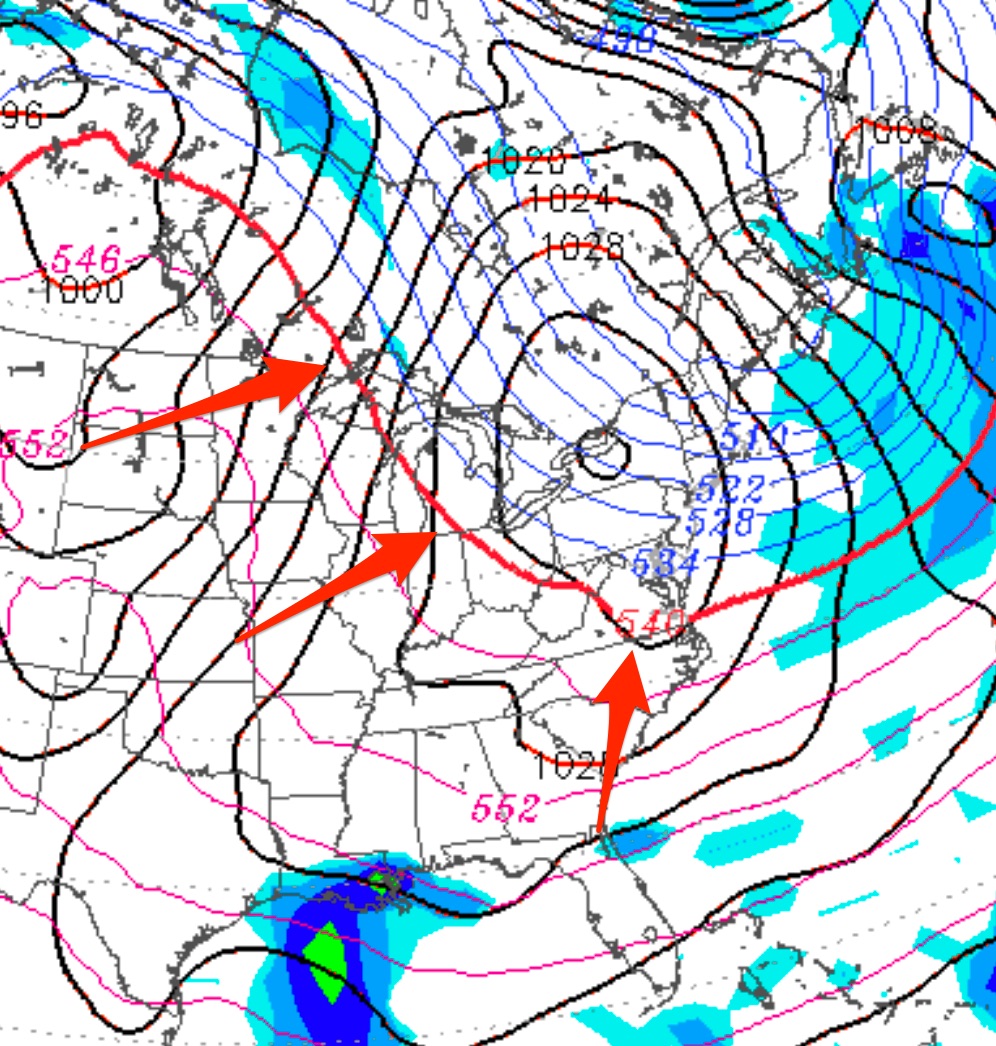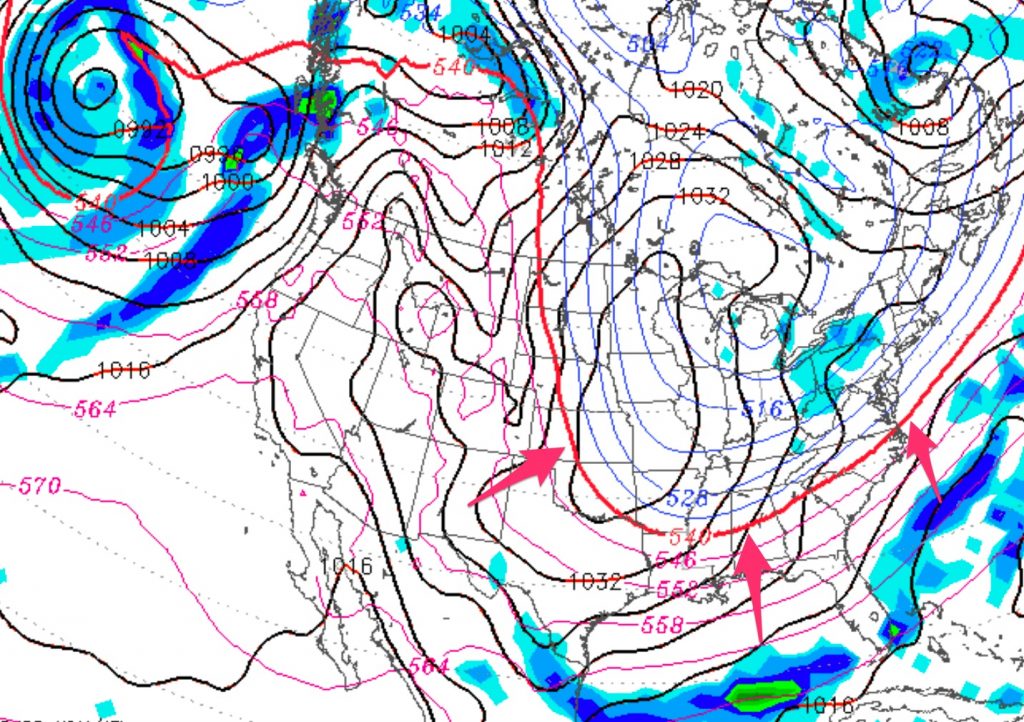[su_box title=”Monday Update 10:30pm” box_color=”#defcdc” title_color=”#000000″]Tonight’s NBM model is showing a high temperature on Thanksgiving Day of 28 for Philadelphia![/su_box]
A dip in the jet stream is predicted for the coming week, with the coldest temperatures forecast for Wednesday night through Thursday night.

The extended range GFS and NBM (National Blend of Models) shows a high of about 32 for Philadelphia on Thursday! Actually, that’s an improvement; the forecast dip was even more amplified just a few days ago.
A warm up and rain is expected next Sunday or Monday, then a return to colder conditions sometime during the following week.
[su_note note_color=”#d9f2da”]I continue to feel we will have a colder than average winter due to the nadir in the sunspot cycle and a stormier winter as well, with plenty of moisture available in the southern jet stream from a developing El Niño in the Pacific.
I first made this preliminary climate prediction a few weeks ago. Past information about the sunspot cycle’s influence on temperatures can be found here.[/su_note]

